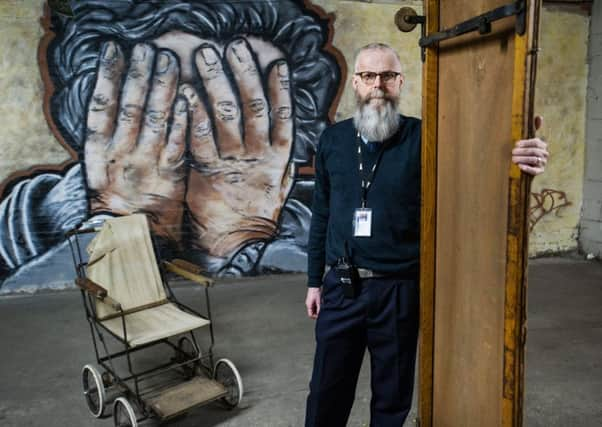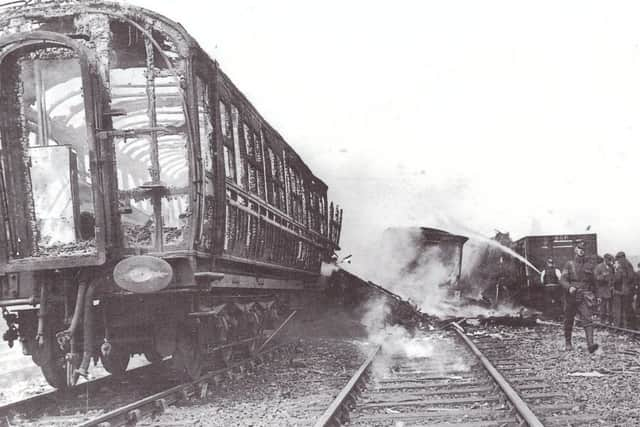First World War relics uncovered at Glasgow Central Station


The century-old artefacts are remnants of the conflict when thousands of dead and wounded soldiers arrived home in Scotland from the front line.
Hundreds of bodies were temporarily stored in a makeshift mortuary beneath the platforms. Some families had the horrific task of having to search for their loved one’s remains among the corpses, laid out under heavy army blankets on stretchers like the one that has been found in a disused storeroom.
Advertisement
Hide AdAdvertisement
Hide AdThe wheelchair was discovered in a locked cupboard beside a long-derelict staff toilet.


They will go on display at a museum being developed at Central to help tell the station’s 138-year-history.
Station historian Paul Lyons, who made the discoveries, said the chair had been adapted from a child’s pram by the Allwin company, reflecting the shortage of components because of the demand for wheelchairs. Others were fashioned from dining-room chairs.
Lyons said it was not known how many soldiers passed through Central during the war, but it was used by regiments including the Highland Light Infantry, Queen’s Own Cameron Highlanders and the Argyll and Sutherland Highlanders.
He said: “It must have been a constant procession of folk. It was an absolute slaughter of men.”


An extract from Eric Bogle’s song No Man’s Land/The Green Fields Of France and a brass plaque are to be installed at the mortuary site to commemorate the contribution of the women in Glasgow, including caring for badly injured soldiers.
Among those whose remains are thought to have been stored there are some of the soldier victims of Britain’s worst rail crash, which killed 227 people at Quintinshill near Gretna in 1915, including three children from Maryhill who had stowed away on one of the trains.
The morgue site is included in the hugely successful behind-the-scenes tours of Central which Lyons leads, that have clocked up nearly 26,000 visitors in two years.
Advertisement
Hide AdAdvertisement
Hide AdSome of the bodies were brought there from Glasgow Royal Infirmary along a tunnel from the hospital, before being put on trains to be handed over to their relatives for burial.
Lyons said: “They were transferred that way because the government was terrified that if people saw a procession of hearses through the streets, they would not want their men to go to war.”
Andy Savage, executive director of the Railway Heritage Trust, which has supported the restoration of the station, said: “I am most impressed with the way Network Rail and its local staff have opened out the undercroft of Glasgow Central station, and demonstrated its heritage.
“This new display will show a most poignant part of the station’s heritage, and is particularly relevant as we commemorate the centenary of the Great War.”